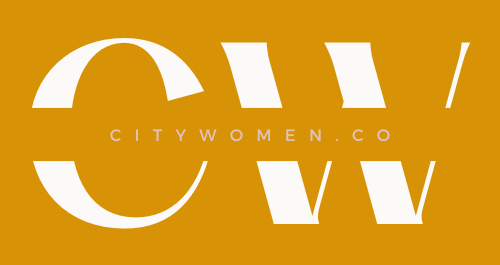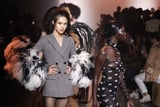October 06, 2021 at 10:05PM
For a person interested in fashion, there is nothing as exciting as imagining and preplanning your future wardrobe based on emerging runway trends. There’s also nothing as infuriating as feeling discouraged by clothing that caught your eye because, for some reason, you find it wasn’t made for you.
As an editor, it’s frustrating to have witnessed season after season of designers refusing to acknowledge people of different body types, abilities, ethnicities, racial backgrounds, and genders on the runway. It makes you want to turn away from an industry that seemingly reflects inconsistency through its values. But more than that, it makes you want to speak up. Especially for the marginalized communities that see certain brands as being unattainable or off-limits, not just because of who is or isn’t wearing the clothing on the runway but also on a basic level, because of how a collection is labeled (and that’s what we see first!).
“No color or fabric or cut is gender exclusive.”
Even before show attendees hear the music thumping and see the lights go down before a presentation, ultimately setting the vibe, they’re greeted with notes on their seats that can do one of two things: speak to everyone or define the customer very specifically. Similarly, before I know what looks I’m going to see from a fashion house when I click into a press release, I often see two different links: “download womenswear” or “download menswear.” That alone excludes an entire population of people who do not identify as a woman or a man, and it also speaks to the antiquated idea that gender identity should influence clothing preference at all. Words alone are that powerful, and they can be that divisive.
For that reason, I still go back to and admire Stoney Michelli Love’s mission statement for Stuzo Clothing all the time: “Our pieces are gender free as we prefer to call them because clothes don’t have organs last time we checked.” It aligns with Chromat designer Becca McCharen-Tran’s perspective and purpose as a creator. Becca put out a full line of swimwear for trans, nonbinary, and queer people for spring/summer 2022, telling me, “Garments are inherently gender neutral, as they are just objects … It’s important that people realize that no color or fabric or cut is gender exclusive.”
Of course, casting comes into play. Who is wearing these clothes as they’re introduced to us for the very first time? The Fashion Spot’s New York Fashion Week diversity report for the season states that transgender and nonbinary model appearances accounted for 2.4 percent of castings for spring/summer 2022. The total number was 30, seen on runways such as The Blonds, Prabal Gurung, Collina Strada, Moschino, Batsheva, Gabriela Hearst, Jonathan Simkhai, and Chromat, of course, which also included one drag queen and one intersex model. That’s an increase compared to the six transgender or nonbinary models at NYFW in fall 2021, but it’s still disheartening when you consider the fact that the European shows that follow tend to be even less inclusive historically.
Ultimately, designers are going to be winning if they show how a skirt – or any item of clothing – can be worn by anyone who wants to, instead of just one specific type of person, thereby changing the narrow definitions of gender we’ve seen on the runway. The labels ahead grasp that simple idea and approach design through a gender-neutral lens, so we’re here to celebrate them. We need to bring visibility to brands that look beyond the binary in order to extend representation into the future.
Continue Reading…
Author Sarah Wasilak | citywomen.co
Selected by CWC




